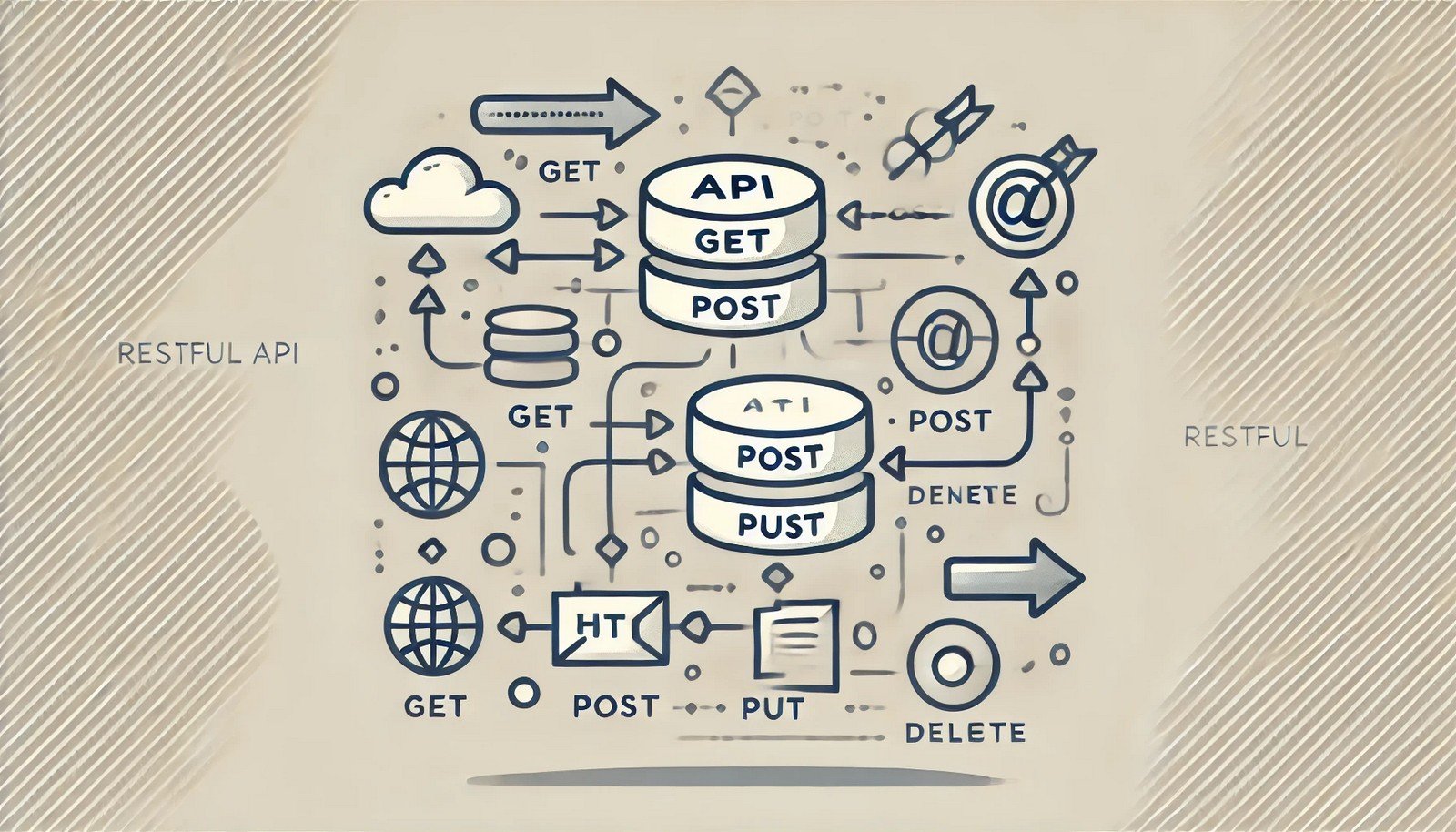RESTful API

Quick Navigation:
- RESTful API Definition
- RESTful API Explained Easy
- RESTful API Origin
- RESTful API Etymology
- RESTful API Usage Trends
- RESTful API Usage
- RESTful API Examples in Context
- RESTful API FAQ
- RESTful API Related Words
RESTful API Definition
A RESTful API (Representational State Transfer Application Programming Interface) is an architectural style for designing networked applications. It uses standard HTTP methods like GET, POST, PUT, and DELETE to interact with resources, represented by URLs. RESTful APIs rely on stateless communication and are widely used for creating scalable and efficient web services. These APIs exchange data in lightweight formats such as JSON or XML and are preferred for their simplicity, scalability, and compatibility with modern web protocols.
RESTful API Explained Easy
Think of a RESTful API like a waiter in a restaurant. You (the client) tell the waiter (API) what you want from the menu (resources), and the waiter brings it to you. The menu items are the information or actions available on a server, and you can ask for them using a simple and standardized way of communicating.
RESTful API Origin
The REST architectural style was introduced by Roy Fielding in his 2000 doctoral dissertation. It provided a structured approach to building web services, focusing on simplicity, scalability, and resource-driven interactions.
RESTful API Etymology
The term “REST” originates from "Representational State Transfer," emphasizing the transfer of resource representations between client and server.
RESTful API Usage Trends
RESTful APIs have become the backbone of modern application development. With the rise of mobile apps, cloud services, and microservices architectures, their lightweight and flexible nature makes them indispensable in diverse domains, from social media platforms to e-commerce applications.
RESTful API Usage
- Formal/Technical Tagging:
- Web Development
- API Design
- Client-Server Architecture - Typical Collocations:
- "RESTful API design principles"
- "consume a RESTful API"
- "build a RESTful service"
- "stateless communication in REST"
RESTful API Examples in Context
- A weather app fetches real-time data from a server using a RESTful API.
- Online stores use RESTful APIs to connect their product databases with user-facing web interfaces.
- Social media platforms enable developers to integrate posting and sharing functionalities via RESTful APIs.
RESTful API FAQ
- What is a RESTful API?
A RESTful API is a set of rules for building web services, focusing on simplicity and scalability through stateless communication. - How does a RESTful API differ from other APIs?
RESTful APIs use standard HTTP methods and emphasize statelessness, unlike SOAP, which is protocol-heavy and requires XML-based communication. - What are the advantages of RESTful APIs?
They are simple, scalable, flexible, and compatible with a wide range of systems. - Why is statelessness important in RESTful APIs?
Statelessness ensures each request contains all necessary information, improving scalability and reliability. - What formats do RESTful APIs support?
Common formats include JSON, XML, and plain text, with JSON being the most popular due to its lightweight nature. - Can RESTful APIs be secured?
Yes, they can use HTTPS, authentication tokens, and other security measures to protect data exchanges. - What is the role of HTTP methods in RESTful APIs?
Methods like GET, POST, PUT, and DELETE define actions like retrieving, creating, updating, or deleting resources. - Are RESTful APIs suitable for mobile apps?
Absolutely, their lightweight and efficient communication make them ideal for mobile app backends. - What is HATEOAS in RESTful APIs?
Hypermedia as the Engine of Application State, a feature that guides client interaction dynamically through links. - How are RESTful APIs used in microservices?
RESTful APIs act as the glue connecting microservices, enabling seamless inter-service communication.
RESTful API Related Words
- Categories/Topics:
- Web Services
- Client-Server Communication
- HTTP Protocol
Did you know?
The Twitter RESTful API is one of the most famous examples of public APIs, enabling developers to build countless third-party tools and applications by interacting with Twitter's core functionalities.
PicDictionary.com is an online dictionary in pictures. If you have questions or suggestions, please reach out to us on WhatsApp or Twitter.Authors | Arjun Vishnu | @ArjunAndVishnu

I am Vishnu. I like AI, Linux, Single Board Computers, and Cloud Computing. I create the web & video content, and I also write for popular websites.
My younger brother, Arjun handles image & video editing. Together, we run a YouTube Channel that's focused on reviewing gadgets and explaining technology.



Comments powered by CComment